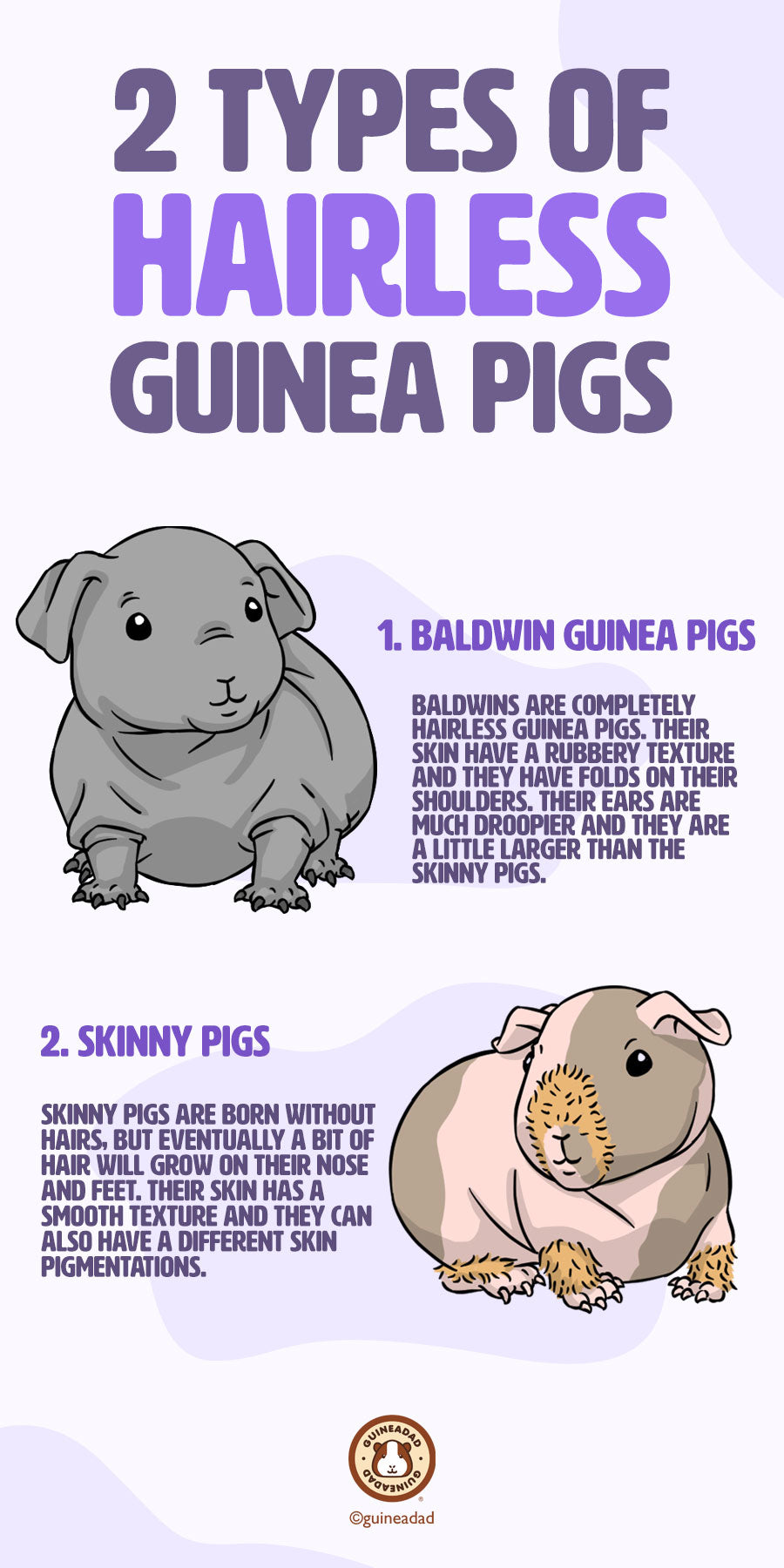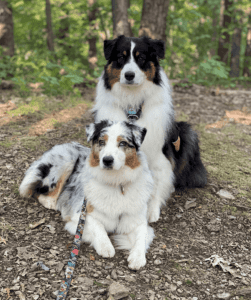Key Takeaways
-
Adopting a Baldwin guinea pig typically costs between $50 and $100 initially.
-
Baldwin guinea pigs are born with fur, which they lose completely as they mature.
-
Unlike skinny pigs, Baldwin guinea pigs have a rubbery skin texture and no residual hair.
-
These guinea pigs require specific care, including a warm environment and regular skin maintenance.
-
Baldwin guinea pigs can live between 5 to 7 years with proper care.
Baldwin Hairless Cavy Guinea Pig
When it comes to unique pets, the Baldwin guinea pig stands out due to its completely hairless body and rubbery skin texture. These charming creatures are not only fascinating to look at but also bring a lot of joy to their owners. However, owning a Baldwin guinea pig comes with its own set of responsibilities and considerations.
“As an adult, the Baldwin guinea pig is completely hairless. As they developed from white crested guinea pigs, they have wrinkles and folds on their shoulders and crowns in the areas where the crest would be. Their skin has a rubbery texture.”

“Skinny Pigs – The Hairless Guinea Pig …” from guineadad.com and used with no modifications.
Introduction to Baldwin and Skinny Pigs: What You Need to Know
Baldwin guinea pigs and skinny pigs are the two main types of hairless guinea pigs. While they may look similar at first glance, they have distinct differences that make each breed unique.
-
Baldwin Guinea Pigs: Born with fur, which they gradually lose over time, becoming completely hairless.
-
Skinny Pigs: Born almost hairless, except for patches of hair on their nose and feet.
Both types of hairless guinea pigs came about as a result of spontaneous genetic mutations. While skinny pigs were developed in a lab setting, Baldwin guinea pigs are a product of natural genetic variations in white-crested cavies discovered by a Californian breeder.
Should You Adopt a Baldwin Guinea Pig?
Before deciding to adopt a Baldwin guinea pig, it’s essential to weigh the pros and cons. These pets are unique and fascinating but also require specialized care. For those interested in other small pets, you might want to explore Campbell dwarf Russian hamster adoption.
Pros and Cons
Owning a Baldwin guinea pig can be incredibly rewarding, but it’s not without its challenges. For those considering adopting a different type of guinea pig, such as an Abyssinian Satin guinea pig, it’s important to understand the unique needs and characteristics of each breed.
Pros:
Adopting a Baldwin guinea pig can be a rewarding experience as they are known for their unique appearance and friendly nature. For those interested in other unique pets, consider exploring the Abyssinian Satin Guinea Pig as well.
-
Unique appearance that many find endearing.
-
Less allergenic due to the absence of fur.
-
Generally friendly and sociable animals.
Cons:
-
Requires a warm environment to stay healthy.
-
Needs regular skin care to prevent dryness and infections.
-
More susceptible to injuries and skin issues.
Adoption Costs and Considerations
Adopting a Baldwin guinea pig involves several costs, from initial fees to long-term care expenses. It’s crucial to be financially prepared for these commitments.
Initial Adoption Fees
The initial cost of adopting a Baldwin guinea pig can vary depending on where you adopt from. Generally, the adoption fee ranges between $50 and $100. This fee often includes basic health checks and sometimes initial supplies like a small cage or some food.
Long-Term Care Costs
Long-term care for a Baldwin guinea pig can add up, especially considering their specific needs. Here’s a breakdown of some of the ongoing costs:
-
Food: Baldwin guinea pigs require a balanced diet of hay, fresh vegetables, and guinea pig pellets, which can cost around $20 to $30 per month.
-
Bedding: High-quality bedding is essential for their comfort and health, costing about $10 to $20 per month.
-
Heating: Since they lack fur, Baldwin guinea pigs need a warm environment, which might increase your heating bills slightly, especially in colder months.
Medical Expenses
Medical expenses are another crucial consideration. Regular vet check-ups, vaccinations, and emergency treatments can add up. It’s advisable to budget around $100 to $200 annually for veterinary care. Additionally, because Baldwin guinea pigs are prone to skin issues, you might need to invest in specialized skin care products.
Average Size and Weight
Baldwin guinea pigs, like other guinea pig breeds, are relatively small. An adult Baldwin guinea pig typically weighs between 1.5 to 2.5 pounds and measures about 8 to 12 inches in length. Their size makes them easy to handle and a good fit for indoor living.
Growth Milestones
Baldwin guinea pigs go through several growth stages before reaching adulthood. They are born with fur, which they start losing within the first few weeks. By the time they are a few months old, they are completely hairless. During this time, it’s crucial to monitor their health closely, as the transition to hairlessness can sometimes lead to skin issues. For more information on guinea pig breeds, check out the Abyssinian Guinea Pig.
It’s also important to provide a balanced diet rich in vitamin C during their growth phase. This ensures they develop strong bones and a healthy immune system. Regular vet check-ups can help track their growth and catch any potential health problems early.
Comparing Baldwin Pigs to Other Breeds
When considering a Baldwin guinea pig, it’s helpful to understand how they compare to other breeds, particularly the skinny pig. While both are hairless, they have different characteristics that may make one a better fit for your household than the other.
Besides their unique physical traits, Baldwin and skinny pigs also have different care requirements. Understanding these differences can help you make an informed decision.
Difference Between Baldwin Guinea Pigs and Skinny Pigs
The most obvious difference between Baldwin guinea pigs and skinny pigs is their hair. Baldwin guinea pigs are born with fur that they lose completely, while skinny pigs are born almost hairless, retaining only small patches of hair on their nose and feet.
Hair Growth and Loss Patterns
One of the most fascinating aspects of Baldwin guinea pigs is their hair loss pattern. They are born with a full coat of fur, which they gradually shed over the first few weeks to months of their life. This process is due to a specific genetic mutation that affects their hair follicles.
In contrast, skinny pigs are born with very little hair and maintain their hairless appearance throughout their lives. This difference in hair growth and loss patterns is a key factor to consider when deciding which breed is right for you.
Besides that, the hair loss process in Baldwin guinea pigs can sometimes lead to skin issues, such as dryness or irritation. Therefore, they require more attentive skin care compared to skinny pigs.
Skin Texture and Pigmentation
Baldwin guinea pigs have a unique skin texture that sets them apart from other breeds. Their skin is rubbery and often has wrinkles and folds, particularly around the shoulders and neck. This texture can make them more prone to skin injuries and infections, so it’s important to handle them gently.
“The Baldwin guinea pig has wrinkles and folds on their shoulders and crowns in the areas where the crest would be. Their skin has a rubbery texture.”
In terms of pigmentation, Baldwin guinea pigs can come in various skin colors, just like their furred counterparts. This can include shades of pink, brown, and even black. Their skin pigmentation can change slightly as they age, so don’t be alarmed if you notice subtle differences over time.
Behavioral Characteristics
Both Baldwin and skinny pigs are known for their friendly and social nature. They enjoy interacting with their owners and other guinea pigs. However, because they lack fur, they can be more sensitive to temperature changes and may seek out warmer spots in their enclosure. For those interested in learning more about different types of guinea pigs, check out this guide on Abyssinian guinea pig adoption.
It’s also worth noting that Baldwin guinea pigs can be more prone to stress due to their unique skin needs. Providing a stable, warm environment and regular interaction can help keep them calm and happy.
Caring for Baldwin Guinea Pigs
Caring for a Baldwin guinea pig involves several specific considerations to ensure they remain healthy and happy. From their diet to their living environment, every aspect of their care needs to be tailored to their unique requirements. For more information, you can read about hairless guinea pigs and their specific needs.
Let’s delve into the key areas of care for these fascinating pets, such as the Abyssinian guinea pig.
“With good care, hairless guinea pigs can thrive and bring a lot of joy to your home. They can be predisposed to all the same health issues other guinea pigs experience.”
Dietary Requirements
Like all guinea pigs, Baldwins require a diet rich in vitamin C. They cannot produce this vitamin on their own, so it’s crucial to include foods that provide it. Fresh vegetables such as bell peppers, kale, and broccoli are excellent sources of vitamin C.
In addition to fresh vegetables, their diet should consist of high-quality guinea pig pellets and unlimited hay. Hay is essential for their digestive health and helps keep their teeth in good condition. For more information on adopting small pets, you can read about Campbell Dwarf Russian Hamster adoption.
Grooming Needs
Grooming a Baldwin guinea pig is quite different from grooming a furred guinea pig. Since they lack fur, they don’t need regular brushing, but their skin requires special attention. For more information, you can read about hairless guinea pigs.
It’s important to keep their skin clean and moisturized to prevent dryness and irritation. Using a gentle, pet-safe moisturizer can help maintain their skin’s elasticity and health. Regular baths are not necessary and can actually dry out their skin, so only bathe them when absolutely needed. Learn more about hairless guinea pigs and their care.
Additionally, keep an eye out for any signs of skin issues, such as redness, flaking, or sores. If you notice any problems, consult your veterinarian for advice on the best course of action.
Housing Environment
Providing a suitable housing environment is crucial for the well-being of your Baldwin guinea pig. Because they lack fur, they are more sensitive to temperature changes and need a warm, stable environment. For more information on other types of guinea pigs, you can read about Abyssinian guinea pigs.
A spacious cage with good ventilation is essential. The cage should be kept in a warm area of your home, away from drafts and direct sunlight. Using fleece bedding can help keep them warm and comfortable.
Recommended Housing Temperature
Baldwin guinea pigs thrive in temperatures between 65°F and 75°F. It’s important to monitor the temperature in their living area to ensure it stays within this range. Using a small space heater or heating pad designed for pets can help maintain a consistent temperature, especially during colder months. Learn more about the Abyssinian guinea pig and how to care for them.
Safety Considerations
Because Baldwin guinea pigs have no fur, their skin is more vulnerable to injuries and infections. It’s important to provide a safe environment free from sharp objects or rough surfaces that could harm their delicate skin. For more information on guinea pig care, you can also read about Abyssinian Satin Guinea Pigs.
Regularly inspect their living area for any potential hazards and make necessary adjustments to keep them safe. Additionally, handle them gently to avoid causing any accidental injuries.
Compatibility With Other Pets
Baldwin guinea pigs are generally friendly and can get along well with other guinea pigs. However, it’s important to introduce them slowly and monitor their interactions to ensure they get along.
When it comes to other pets, such as dogs or cats, it’s crucial to supervise any interactions closely. While some pets may be gentle and friendly, others might see the guinea pig as prey. Always prioritize the safety of your Baldwin guinea pig in these situations.
Time and Commitment
Owning a Baldwin guinea pig requires a significant time commitment. They need daily interaction, regular feeding, and consistent care to stay healthy and happy. For more information, you can read about hairless guinea pigs and their care requirements.
Before adopting a Baldwin guinea pig, consider whether you have the time and resources to meet their needs. These pets can live for 5 to 7 years, so it’s important to be prepared for a long-term commitment. For more information on different types of guinea pigs, check out our guide on Abyssinian guinea pig adoption.
Frequently Asked Questions (FAQ)
Here are some common questions about Baldwin guinea pigs to help you better understand their care requirements and characteristics.
How long do Baldwin guinea pigs live?
Baldwin guinea pigs typically live between 5 to 7 years with proper care. Providing a balanced diet, a warm environment, and regular veterinary check-ups can help ensure they live a long and healthy life.
What kind of diet do Baldwin guinea pigs need?
Baldwin guinea pigs require a diet rich in vitamin C, which includes fresh vegetables like bell peppers, kale, and broccoli. They also need high-quality guinea pig pellets and unlimited hay for their digestive health and dental care. For more information on guinea pig care, check out this guide on Abyssinian Satin guinea pigs.
Are Baldwin guinea pigs more prone to diseases?
While Baldwin guinea pigs can be predisposed to the same health issues as other guinea pigs, their lack of fur makes them more susceptible to skin problems. Regular skin care and monitoring for any signs of issues are essential to keep them healthy.
How do you keep Baldwin guinea pigs warm?
To keep Baldwin guinea pigs warm, maintain a consistent temperature in their living area between 65°F and 75°F. Using fleece bedding, a small space heater, or a heating pad designed for pets can help ensure they stay comfortable, especially during colder months.
Can Baldwin guinea pigs live with other guinea pigs?
Yes, Baldwin guinea pigs can live with other guinea pigs. However, it’s important to introduce them slowly and monitor their interactions to ensure they get along. Providing separate spaces within the same enclosure can help prevent any conflicts. If you’re considering adopting a different breed, you might want to learn more about Abyssinian guinea pigs.
By understanding the unique needs of Baldwin guinea pigs and providing the proper care, you can enjoy a rewarding and fulfilling experience with these fascinating pets.


